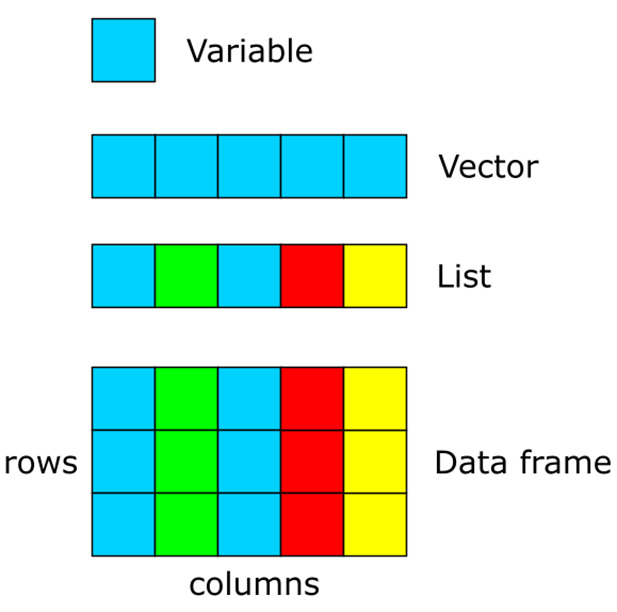Lists and Data frames
Overview
Teaching: 10 min
Exercises: 0 minQuestions
What other data structures are there?
Objectives
Understand the use of vectors, lists, and data frames.
Lists
We will take a brief look at lists. At first glance they may seem very similar to vectors but we are going to cover some key differences.
- Lists can hold different data types they are not restricted to a single data type like vectors
- They also can hold vectors. matrices, and even other lists which allows them to assume more complicated and hierarchical structures than vectors.
Try out:
list_example <- list(1, “hello”, TRUE)
vector_example <- c(1, “hello”, TRUE)
If we ouput both structures via the console:
list_example
1 "hello" TRUE
vector_example
"1" "hello" "TRUE"
What is different about the ‘vector_example’ and the ‘list_example’?
We know that all variables in a vector must have the same type. If we remember the hierarchical order of coercion we know R will have to change variables to the highest variable type, in this case character. This is what we see in the vector_example.
Addressing lists
To access a specific element in a list you need to address with double brackets (e.g., “list_example[[1]]”). If you use single brackets, you will get access to a sub list that contains the element.
list_example[[3]]
TRUE
list_example[3]
[[1]]
TRUE
Data frames
Data frames are a great structure to store and manipulate tabular data. They are a two-dimensional data structure where columns must contain the same data type. However, columns can hold differing data types from other columns. If you think this data structure sounds suspiciously like a list of vectors, you are correct. Data frames can be created in RStudio from the console but most commonly we are going to want to read them in from a source (e.g., csv file, excel spreadsheet, etc.).

Key Points
Data frames are lists of vectors.
Data frames are the most common way of storing tabular data